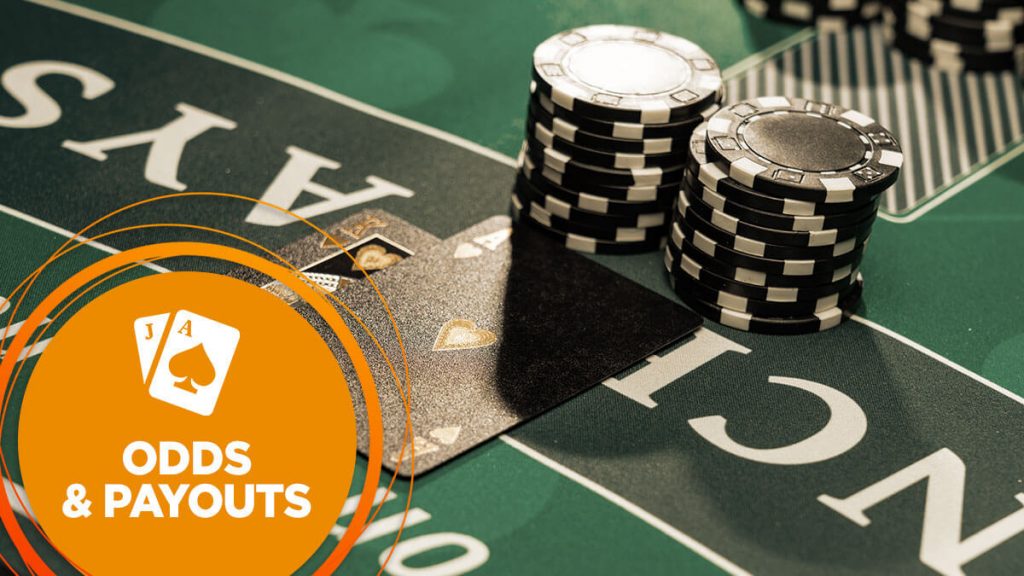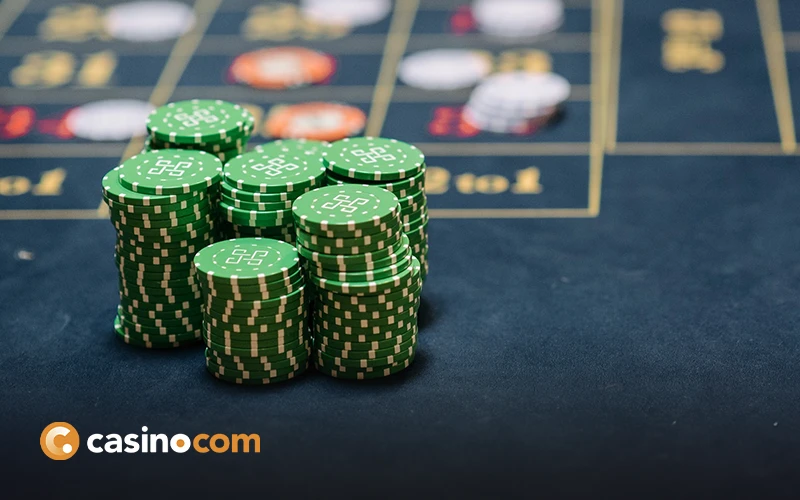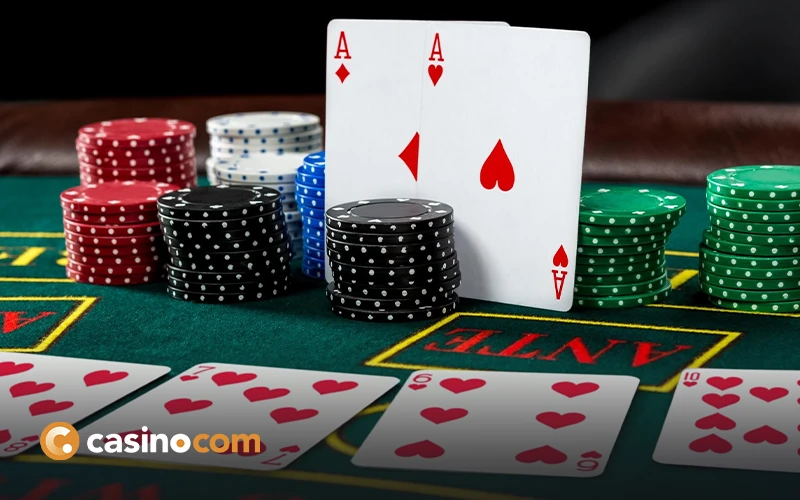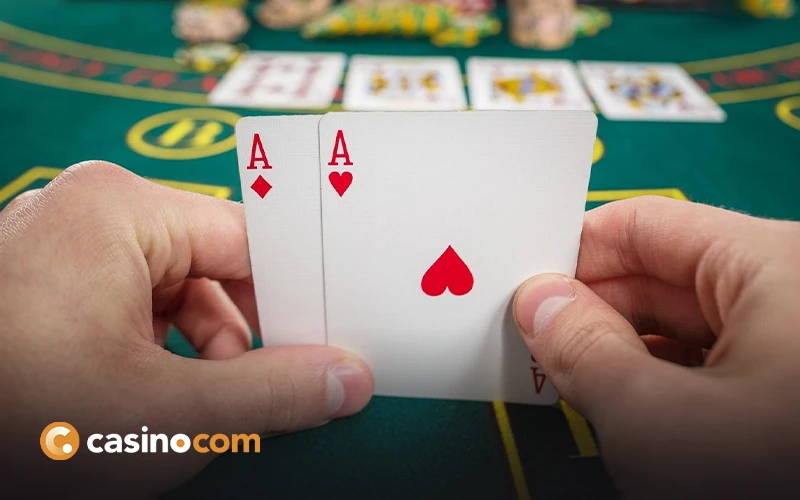If you are a total novice when it comes to playing blackjack, you will almost certainly be unfamiliar with the blackjack payouts available to you. Within this page, we’ll explore the blackjack odds you can expect at various tables. With this explanation, you should be able to pick the right online blackjack game that minimises the blackjack house edge and maximises your betting bankroll.
First and foremost, let’s take a look at a standard game of blackjack. It’s important to understand the payouts of the original game first before we move on to any of the popular blackjack variants available online.
Basic Blackjack Payouts Revealed
-
- Winning a hand against the dealer
Blackjack is an even-money card game at its core. If you bet one unit per hand, you will win one unit per winning hand against the dealer. This payout is known as a 1:1 return. You’ll win one unit for every one unit you bet – plus your initial stake will be returned to you.
- Winning a hand against the dealer
-
- Doubling down and winning a hand against the dealer
If you double down a hand to win against the dealer, the payout ratio will be the same (1:1). You’re simply doubling the number of units you bet per hand.
- Doubling down and winning a hand against the dealer
- Landing a blackjack
If you are fortunate enough to land a blackjack – an ace and a face card – you will get one of two blackjack payouts, depending on which table you sit at. There are tables that offer 3:2 blackjack odds or 6:5 blackjack odds.The former obviously offers a higher payout, but we’re increasingly finding that online casinos are offering 6:5 blackjack more readily. That’s because 6:5 blackjack payouts significantly improve the game’s edge in favour of the house. In fact, it adds a further 1.39% to the blackjack house edge by playing 6:5 blackjack games.
-
Insurance
If the dealer is showing an Ace, players may be offered the chance for insurance. Insurance is generally half of the player’s original bet and pays 2:1 if the dealer does indeed have blackjack. If they do not, the insurance is lost and the hand goes on as it normally would.
How Does the Blackjack House Edge Work?
Let’s say for example that you sit down and play at a 3:2 online blackjack table. You bet £10 on your hand and are subsequently dealt a blackjack. The dealer only has 14. You receive a payout of 3:2 on your £10 wager. To calculate, divide three by two and multiply it by the size of your wager. In this case – 1.5 x £10 = £15.
Now let’s run through the same example had you played at a 6:5 online blackjack table. You receive a payout of 6:5 on your same £10 wager. To calculate, divide six by five and multiply it by the size of your wager – 1.2 x £10 = £12.
This means that for every blackjack you win at a table offering 3:2 blackjack payouts, you’re earning £3 more per £10 bet. That equates to a 30% difference, which is a significant amount when extrapolated over the long term.
When it comes to the blackjack house edge, you should also look carefully at the rules on double down. If they state that you can only double down on hands valued 10 or 11, the house edge rises by 0.25% . The house edge also increases depending on how many decks of cards are in play. The more decks used, the bigger the house edge, due to the greater number of variables in the dealer’s card shoe.
There are other rules in blackjack that can reduce the blackjack house edge. Let’s take a look at the other rules offered at some tables and how they can improve your statistical chances of winning:
-
- Dealer standing on ‘soft’ 17
Additional 0.22% towards player edge
- Dealer standing on ‘soft’ 17
-
- Early surrender
Additional 0.60% towards player edge
- Early surrender
-
- Resplitting aces
Additional 0.04% towards player edge
- Resplitting aces
-
- Late Surrender
Additional 0.02% towards player edge
- Late Surrender
Even if you’re able to find a table with one or two of the above rules offered, it all adds up to increase your winning potential.
It’s also important to take side bets into consideration at certain blackjack tables. Although side bets may offer something different from the norm, they can also eat into the game’s house edge further still:
-
- 21+3
The 21+3 side bet first appeared on the blackjack tables of the Las Vegas Hilton back in 2001. This wager paid out based on your first two cards and the value of the dealer’s up card. The house edge of this side bet played using four, six and eight decks is 4.24%, 3.24% and 2.74% respectively.
- 21+3
- Perfect Pair
The Perfect Pair side bet allows you to bet on the likelihood of your hand being the same as the dealer’s hand. A Perfect Pair is when your two cards are the same value and suit. A Coloured Pair is when your two cards are the same colour and value. A Red/Black Pair is when your two cards are the same value, regardless of colour. If three of the four cards dealt to you and the dealer are the same value and suit, you will win the 100:1 maximum payout. The house edge of this side bet using four, six and eight decks is 21.50%, 12.54% and 8.05% respectively.
Blackjack Hand Odds
Blackjack, for the player, is all about finding the right odds. Of course, not every hand is going to provide the player with the best opportunity to win. But going into each hand with a decent idea of what your chances of busting are can be helpful.
Of course, the goal is to get blackjack on the first two cards you get. Most of the time, that’s not going to happen. The other goal is to try to reduce the house edge, which already is daunting enough but can get worse to manage depending on the hand.
While there are other strategies and techniques out there to be aware of, it helps to know the basic odds of busting. Having this helpful table can give you a mental note of whether you should hit or stand with your next move.
|
Hand |
Probability of Busting |
|
11 or lower |
0% |
|
12 |
31% |
|
13 |
39% |
|
14 |
56% |
|
15 |
58% |
|
16 |
62% |
|
17 |
69% |
|
18 |
77% |
|
19 |
85% |
|
20 |
92% |
While it may seem obvious to stay away from hitting on 18 or more, knowing what to do in situations with lower value may not be so cut and dry. Though the odds may be in your favor, it is also important to remember that it is still possible to bust.
This is why it is so important to have a strategy in place before you sit down. With a strategy, you may decide that 16 or higher is a stand every time. Mixing it up and hitting sometimes while standing the other may create some random wins but it will make it virtually impossible to remember where you were achieving consistent success.
The Player’s Odds of Winning in Blackjack
Another important question to ask is, “What are my odds of winning in a hand of blackjack?” On average, the odds that the player will win are 42.22%. The house then has an edge of 49.1%, comparatively speaking, while a push has an 8.48% chance.
The odds for blackjack will vary from hand to hand. Some of it depends on the variant you are playing as well as particular house rules. Going into a game of blackjack with no strategy means that your odds will probably drop compared to someone who is sticking to a plan of action.
Blackjack does have the random chance factor and there is nothing that can be done about that. Of course, blackjack odds are calculated over a lot of hands and a long period of time. Luck plays a role but you can put yourself in better situations based on knowledge and the decisions that you make with it.
All You Need to Know about the RTPs of Blackjack Variations
As we’ve already touched upon, the house edge of blackjack games vary depending on the rules and side bets offered. Let’s look at some of the most popular blackjack variants and the return to player (RTP) percentages available:
-
- European Blackjack (99.38% RTP)
Played with two to eight decks of 52 cards, players are dealt two cards face up, with the dealer dealt one card facing up. The face down card is dealt at the beginning of the dealer’s turn, after all of the players have made their decisions.
- European Blackjack (99.38% RTP)
-
- Progressive Blackjack (56.10% RTP)
Played like a classic blackjack game, Progressive Blackjack tables contain one unique feature – a side bet that must be placed to be in with a chance of landing the progressive jackpot.
- Progressive Blackjack (56.10% RTP)
-
- Blackjack Switch (99.42% RTP)
The brainchild of card game pioneer Geoff Hall, players can switch between two pairs of cards in Blackjack Switch. The payout for blackjack is 1:1 rather than 3:2 and the dealer automatically wins with blackjack, regardless of whether you have blackjack before the card switch.
- Blackjack Switch (99.42% RTP)
-
- Spanish 21 (99.60% RTP)
Played between six and eight decks of cards, all cards with a value of 10 are removed from play. Dealer stands on a soft 17, late surrender and insurance are available.
- Spanish 21 (99.60% RTP)
-
- Free Bet Blackjack (98.96% RTP)
Another blackjack variant devised by Geoff Hall, Free Bet Blackjack allows players to double down and split for free. The trade-off is that if the dealer hits to 22, all bets left standing push.
- Free Bet Blackjack (98.96% RTP)
Blackjack Payouts: The Bottom Line
If you want to ensure you get the best blackjack odds when playing online blackjack, be sure to find games that offer 3:2 blackjack payouts. Look closely at the RTP percentages offered by your chosen blackjack games. Try to choose ones that offer an RTP or 99% or better, unless you really enjoy the side bets of your chosen variant. Another way to assess a table game is to find out what its house edge is. Numbers closest to 0% indicate a better game for the player. But whichever game you choose, be sure to manage your betting bankroll responsibly. Don’t risk too much of your bank on one or even a few hands. This way you can enjoy a fun session at the tables with reduced risk. Don’t be afraid to use any of the basic strategy blackjack charts either, as they can help guide you with your in-game betting decisions based on the scenario of your hand value and the dealer’s.
FAQ
In many casinos, a blackjack pays 6:5 or even 1:1 instead of the usual 3:2, especially at tables with lower minimum bets. This lower payout was once only for single-deck games but has now spread to double-deck and multi-deck games.
If a player has a blackjack and wants to take insurance, let them know that “Even Money” is the same thing. It only applies if the dealer has an ace showing. The player can ask for Even Money after the dealer offers insurance. Both options mean you get paid 1 to 1, but with Even Money, you get paid immediately. Even Money is not usually available at 6:5 payout tables.
|
Original Bet |
Blackjack Payofff |
|
$100 |
$150 |
|
$125 |
$187.50 |
|
$150 |
$225 |
$170 |
$262.50 |
If you see “Blackjack pays 2 to 1,” that’s great news. It’s rare because it gives players better odds than the house. If you find a casino offering this, take advantage of it.
The difference between 3:2 and 6:5 blackjack is simple: With 3:2, you win $3 for every $2 bet (1.5:1 odds). With 6:5, you win $6 for every $5 bet (1.2:1 odds).

Previous: Betting Systems
Next: Biggest Winners





